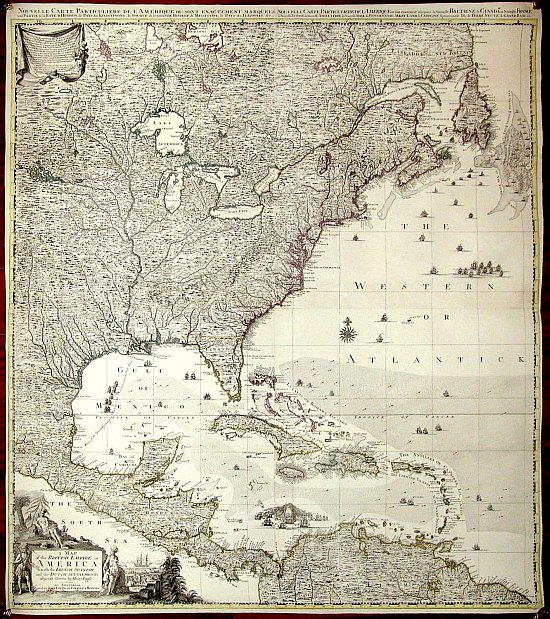Beyond The Golden Age of Dutch cartography which produced some of the most spectacular Dutch sea charts, or “Pascaartes,” with cartographers Johannes Blaeu and Abraham Ortelius, and Dutch atlas publishers Gerard Mercator and Hondius & Janssonius , the 16th century brought the earliest map to depict America as separate from Asia. The northeast coast of South America was shown, and north of it were the islands of ‘Isabella’ (Cuba) and ‘Spagnolla’ (Hispaniola). There was no sign of North America on this map, except for an unnamed fragmentary coast to the southwest of Greenland. The year was 1507, a year after Columbus’s death, and Martin Waldseemüller had published his world map with the new continent he named “America” from the Latin “Americus,” as documented in Amerigo Vespucci’s travel journals in 1502-4.
Waldseemuller’s modern world double-page, woodcut map was one of the true milestones in the history of cartography. Map collectors are today paying six figures for any available early printings of this early view of the cartographic formation of the Americas, despite the fact that it shows the new continent as rough and incomplete. It was the first edition to supplement the traditional Ptolemaic maps with an extensive series of modern maps, which are regarded as the first modern atlas. The Ptolemy world map was based on the description of the world contained in Ptolemy’s book Geographia, which was written c. 150 in the Hellenistic society. If you are searching for such a map do not be disappointed; authentic Ptolemaic maps have never been found.
Following Waldseemuller, Cornelis Wytfliet’s map was the first to concentrate exclusively on the Americas. His atlas, which was first published in 1597, was another supplement to Ptolemy, with regional charts. Some of which were copies from an atlas produced a few years earlier in 1593 by Cornelis de Jode under the name Speculum Orbis Terrae. These supplements to Ptolemy appeared in various international editions, with a number of regional concentrations available for sale at reasonable prices.
During the 17th century much of the Americas’ sense of unclaimed vastness remained. Spanish as well as Dutch voyages that made significant discoveries were lacking topographical expression of dense detail. America Noviter Delineata of G.Mercator, J.Hondius and J. Cloppenburg, shows North America with a peninsula indicating California and a Hudson Bay not yet defined. South America is also lacking, and shows a large fictional Lake Parime, along with the mythical islands of Brazil and Frisland.
The first large-scale map of North America was produced by Henry Popple, a financial agent with New World connections, in 1773. It was a semi-official work on behalf of the Lord Commissioners of Trade and Plantations to aid in the administration. However, everyone knew it had mistakes, especially in the hinterlands where an invented plateau was placed west of a misshapen Lake Huron. Nevertheless, everyone bought one including Benjamin Franklin and John Adams. Map sellers offered the 20 sheets comprising the full map in three formats, with a corresponding increase in price: loose sheets; bound into an atlas; or preassembled and mounted on linen. The Popple was the first English map to name all the original thirteen colonies, as well as one of the first maps to show Georgia, and the distended shaping of the Florida peninsula. Today, institutions own most of the surviving examples of this map. In 2009 Old World Auctions offered a copy for sale for a little under $100,000.
It was not until the year 1755 when a highly accurate map of the United States was produced. “A General Map of the Middle British Colonies,” drawn by Lewis Evans, became the yardstick to describe the Mid-Atlantic area. The only hand-colored copy, printed on raw silk which is in existence today is owned by the Midwestern industrialist Barry MacLean, and is considered to be the holy grail of America’s map-collecting.
While most of these foreign made maps did continue to sell, an American map-making industry centered in Philadelphia did develop after the Revolutionary War, with cartographers such as Joshua Fry and Peter Jefferson. Soon after the Civil War during peaceful times the American people became interested in owning and studying maps, and they soon flooded the walls of homes and workplaces. The few that survive today and make it to market achieve a naturally increasing rarity and offer a great value.


{ 1 comment… read it below or add one }
The large map shown in this article is the Henry Popple map created in 1733 (not 1773).